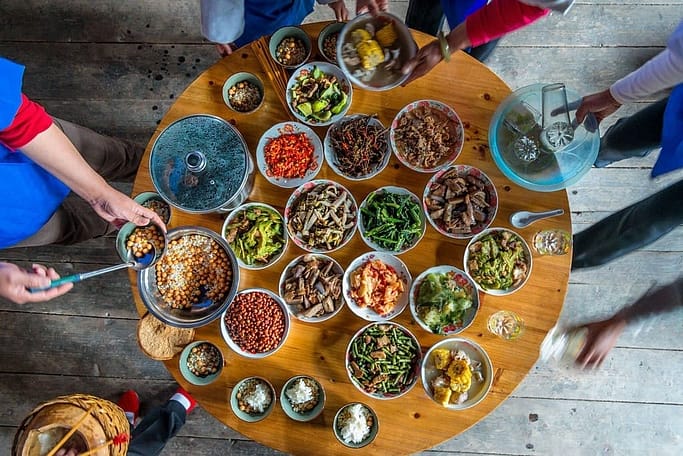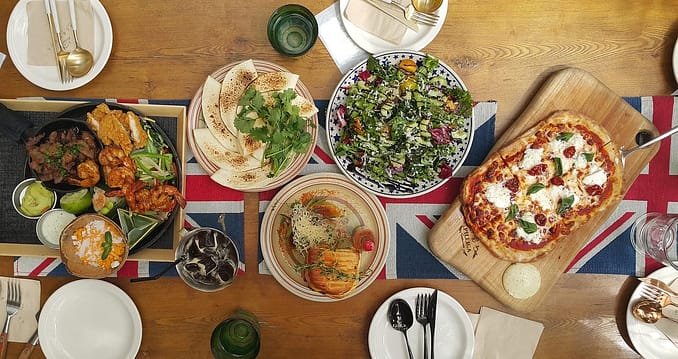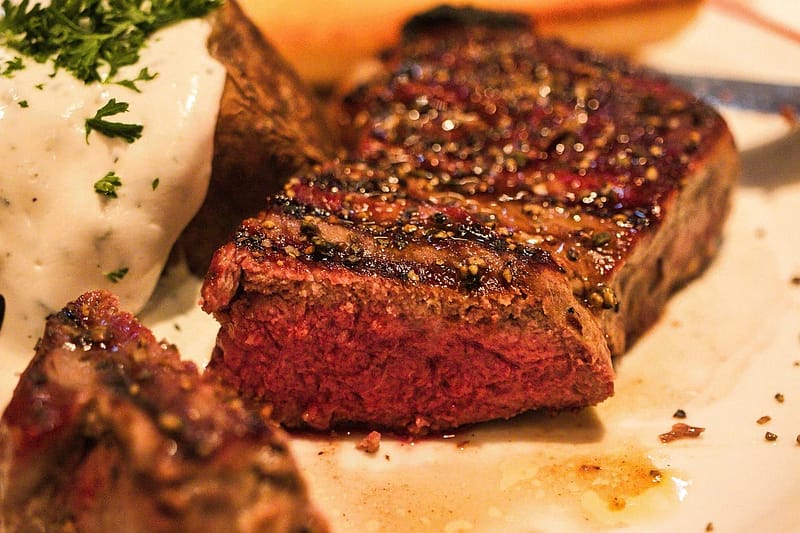When you stroll through your local Coles or Woolworths these days, you can’t miss the explosion of plant-based options lining the shelves. From jackfruit tacos to cashew cheese and lentil bolognese, Aussie kitchens are embracing a dietary shift that’s reshaping how we think about food. Whether you’re motivated by health concerns, environmental consciousness, or simply curious about trying something new, plant-based dining offers a delicious pathway to nourishing your body while treading more lightly on the planet.
The plant-based movement isn’t about deprivation or bland salads. It’s about discovering vibrant flavours, creative cooking techniques, and nutrient-dense ingredients that leave you feeling energised and satisfied. With 2.5 million Australians now following predominantly plant-based diets and another 19% identifying as flexitarians, it’s clear this isn’t just a passing trend—it’s a fundamental shift in how we approach our plates.
Why Plant-Based Eating Is Taking Off in Australia
Australia has emerged as one of the world’s fastest-growing markets for plant-based foods, with the industry expected to reach nearly $1 billion by 2033. But what’s driving this surge? The reasons are as varied as the people making the switch.
Health Benefits That Speak Volumes
The science behind plant-based eating is compelling. Research consistently shows that diets centred on vegetables, fruits, whole grains, legumes, nuts, and seeds are associated with lower rates of cardiovascular disease, type 2 diabetes, and certain cancers. One of the most significant advantages is the impact on heart health plant-based diets are naturally free from cholesterol and typically low in saturated fat, which helps reduce LDL (the “bad” cholesterol) levels by 15 to 30%.
Think of fibre as nature’s vacuum cleaner for your arteries. Foods like beans, lentils, and vegetables work to sweep away fatty deposits that can accumulate in blood vessels, reducing your risk of heart disease. Plant-based diets also tend to be higher in antioxidants and phytochemicals compounds that fight inflammation and support cellular health throughout your body.
The mental health connection is equally fascinating. Recent studies have found that high-quality plant-based diets rich in whole foods are associated with reduced symptoms of anxiety and depression. The gut-brain axis—the intricate communication network between your digestive system and your brain appears to thrive on the diverse fibre and nutrients found in plant foods, potentially supporting better mood regulation and stress response.
Environmental Impact That Matters
For many Australians, the environmental argument for plant-based eating is equally persuasive. Animal agriculture contributes approximately 53% of food-related greenhouse gas emissions globally, and livestock farming remains a major driver of deforestation and habitat loss. Research from Murdoch University suggests that shifting toward plant-based protein sources like lentils, beans, and soy can reduce food-related emissions by 10 to 50 times, depending on the animal product being replaced.
The numbers are staggering: agriculture uses 69% of all fresh water and is responsible for 73% of deforestation worldwide. By choosing plant-based meals even a few times per week, you’re contributing to reduced land use, water conservation, and biodiversity protection benefits that extend far beyond your own kitchen.
The Flexitarian Approach
You don’t need to go fully vegan to reap the benefits of plant-based eating. The flexitarian approach primarily plant-based with occasional meat and fish has become Australia’s second most popular dietary choice. About 21% of Australians now identify as “meat reducers,” with many citing health, environmental concerns, and increasingly, budget considerations as their primary motivators. The cost-of-living crisis has made the affordability of beans and lentils compared to meat increasingly appealing, with more than half of meat reducers in 2024 citing budget as a key factor.
Getting Started: Practical Tips for Your Plant-Based Journey
Transitioning to more plant-based meals doesn’t require an overnight overhaul of your pantry. Small, sustainable changes are far more likely to stick than dramatic restrictions that leave you feeling deprived.
Start Where You Are
Begin by simply adding more vegetables to meals you already enjoy. Toss extra mushrooms, capsicum, and zucchini into your pasta sauce. Load up your morning toast with smashed avocado, tomatoes, and spinach. Swap meat for legumes in familiar dishes—try a hearty bean chilli instead of beef mince, or a lentil bolognese that’s just as satisfying as the original.
Consider implementing “Meatless Monday” or choosing one meal per day to make plant-based. These gentle transitions allow your palate and cooking skills to develop gradually, making the shift feel less daunting and more sustainable over the long term.
Stock Your Plant-Based Pantry
Having the right ingredients on hand makes plant-based cooking infinitely easier. Focus on building a foundation of versatile staples:
Legumes are your protein powerhouses. Keep your pantry stocked with canned chickpeas, black beans, lentils, and cannellini beans. These affordable, shelf-stable ingredients form the backbone of countless satisfying meals—from curries and salads to burgers and dips.
Whole grains add substance and nutrition to your plate. Brown rice, quinoa, barley, wholemeal pasta, and rolled oats provide complex carbohydrates, protein, and fibre that keep you satisfied for hours. Australian brands like Marley Spoon have popularised unique grain blends combining brown rice, red quinoa, and black barley for added texture and nutrients.
Nuts, seeds, and nut butters contribute healthy fats, protein, and satisfying richness. Almonds, walnuts, cashews, chia seeds, hemp seeds, and tahini are particularly versatile. For an Australian twist, consider native ingredients like macadamias and wattle seed.
Plant-based proteins like tofu, tempeh, and seitan offer a meat-like texture and absorb flavours beautifully. Sydney-based Soy Co. produces excellent tofu and tempeh that work brilliantly in everything from stir-fries to wraps. For those who prefer familiar formats, Australian brands like v2food, Veef, and Beyond Meat offer plant-based mince, burgers, and sausages that are approaching price parity with conventional meat.
Fresh and frozen produce should fill your fridge and freezer. Don’t overlook frozen vegetables—they’re picked at peak ripeness, retain excellent nutrition, and eliminate waste. Leafy greens, colourful vegetables, and seasonal fruits provide essential vitamins, minerals, and antioxidants.
Mind Your Nutrients
While plant-based diets offer abundant nutrition, a few key nutrients require attention to ensure you’re meeting your body’s needs.
Protein is rarely an issue when eating a varied plant-based diet. Legumes, soy foods, quinoa, nuts, seeds, whole grains, and even vegetables all contribute protein. Most Australians consume significantly more protein than required, but if you’re concerned, aim for protein-rich foods like tofu (11 grams per 100 grams), tempeh, lentils, and chickpeas throughout the day.
Vitamin B12 is the one nutrient not reliably available from plant sources. If you’re eating a fully plant-based diet, you’ll need fortified foods (some plant milks, breakfast cereals, and nutritional yeast) or a supplement. The Vegan Society recommends either eating fortified foods twice daily to reach 3 micrograms or taking a supplement of at least 10 micrograms daily.
Iron from plant sources is absorbed less efficiently than iron from meat, but you can significantly boost absorption by pairing iron-rich foods with vitamin C. Enjoy your spinach salad with capsicum and tomatoes or have strawberries with your iron-fortified breakfast cereal.
Omega-3 fatty acids, particularly important for brain and heart health, can be obtained from ground flaxseeds, chia seeds, hemp seeds, and walnuts. Add a tablespoon of ground flaxseed to your morning porridge or smoothie for an easy omega-3 boost.
Calcium needs can be met through fortified plant milks (look for brands with at least 120mg calcium per 100ml), leafy greens, tahini, almonds, and calcium-set tofu.
Avoid Common Pitfalls
New plant-based eaters often stumble in predictable ways. Knowing these common mistakes can help you sidestep them entirely.
Not eating enough is surprisingly common. Plant foods are generally less calorie-dense than meat and cheese, so you may need larger portions or more frequent meals to feel satisfied. If you’re experiencing persistent hunger or fatigue, increase your intake of calorie-dense plant foods like avocados, nut butters, tahini, and dried fruits.
Relying too heavily on processed foods defeats the health purpose of plant-based eating. While convenient vegan burgers and cheeses have their place, the foundation of your diet should be whole foods vegetables, fruits, legumes, whole grains, nuts, and seeds. When you do purchase packaged foods, check labels for excessive sodium, added sugars, and unhealthy fats.
Under-seasoning is perhaps the quickest way to lose enthusiasm for plant-based cooking. Plants shine when properly seasoned. Embrace your spice cabinet—cumin, smoked paprika, turmeric, nutritional yeast, fresh herbs, garlic, ginger, and quality olive oil transform simple ingredients into crave-worthy meals.
Delicious Plant-Based Recipes to Try
The beauty of plant-based cooking lies in its versatility and global influences. Australian plant-based cuisine draws from Mediterranean, Asian, and native Australian flavours to create dishes that are anything but boring.
Morning Fuel: Plant-Based Breakfasts
Start your day with a nourishing breakfast that sustains energy without weighing you down.
Overnight oats offer effortless nutrition. Combine rolled oats with plant milk, a tablespoon of chia or ground flaxseeds for omega-3s, and a serving of fruit. Let it sit overnight, and wake up to a creamy, satisfying breakfast. Add a dollop of plant-based yogurt, a drizzle of maple syrup, and a sprinkle of nuts for texture.
Tofu scramble delivers protein-packed savoury satisfaction. Crumble firm tofu and sauté with turmeric (for colour), nutritional yeast (for a cheesy flavour), garlic powder, and your favourite vegetables mushrooms, spinach, tomatoes, and capsicum work beautifully. Serve on wholegrain toast with avocado for a complete meal.
Smoothie bowls packed with spinach, frozen banana, plant-based protein powder, and plant milk create a nutrient-dense canvas for creative toppings. Add berries, granola, coconut, chia seeds, and a drizzle of nut butter for a breakfast that looks as good as it tastes.
Midday Satisfaction: Plant-Based Lunches
Lunchtime is perfect for showcasing the versatility of legumes and whole grains.
Mediterranean chickpea salad combines protein-rich chickpeas with cucumber, cherry tomatoes, capsicum, red onion, olives, and fresh herbs. Dress with olive oil, lemon juice, and a pinch of sumac for bright, tangy flavour. Add creamy avocado and serve with wholegrain pita for a satisfying meal.
Golden falafel bowls feature ready-made falafels (brands like Sydney-based Syndian make excellent preservative-free options) over mixed greens, roasted pumpkin, pickled onions, and a generous drizzle of tahini sauce. This combination delivers protein, fibre, healthy fats, and vibrant flavours.
Asian-inspired tofu noodle bowls come together in minutes. Sauté cubed firm tofu until golden, then toss with brown rice noodles, shredded vegetables, and a sauce of soy sauce, lime juice, ginger, and a touch of maple syrup. Top with crushed peanuts, fresh coriander, and sesame seeds.
Evening Comfort: Plant-Based Dinners
Dinner is where plant-based cooking truly shines, with hearty, comforting dishes that satisfy the whole family.
Sweet potato and lentil curry offers warming spices and creamy coconut richness. Sauté onion, garlic, and ginger, add curry powder, cubed sweet potato, red lentils, coconut milk, and vegetable stock. Simmer until tender and serve over brown rice with fresh spinach stirred through at the end.
Mushroom and bean bolognese transforms humble ingredients into a rich, satisfying sauce. Finely chop mushrooms and pulse black beans in a food processor for a meaty texture. Sauté with onion, garlic, tomato paste, crushed tomatoes, and Italian herbs. Serve over wholegrain pasta with fresh basil and nutritional yeast for a cheesy finish.
One-pan veggie bakes simplify weeknight cooking. Toss chickpeas, broccoli, cauliflower, sweet potato, and capsicum with olive oil, garlic, smoked paprika, and cumin. Roast until golden and caramelised, then serve over quinoa or couscous with tahini dressing.
Classic Australian dishes can be easily veganised too. Try plant-based sausage rolls using pecans, oats, and herbs wrapped in flaky pastry, or a hearty shepherd’s pie with lentils and mushrooms topped with creamy mashed potato.
Simple Sides and Snacks
Round out your meals with nourishing sides that add colour and nutrition.
Roasted vegetables with garlic, lemon zest, and chilli flakes bring out natural sweetness and add vibrant flavour to any plate. Asparagus, broccolini, Brussels sprouts, and carrots all benefit from high-heat roasting.
Hummus made from chickpeas, tahini, lemon juice, and garlic serves as a protein-rich dip for raw vegetables or a creamy spread for sandwiches and wraps.
Energy balls combining dates, nuts, oats, and cocoa powder provide a naturally sweet snack that satisfies between meals without added sugar.
Meal Planning Makes It Easy
The secret to sustainable plant-based eating is planning ahead. Dedicate a couple of hours each week to meal prep, and you’ll have nourishing options ready when time is tight.
Batch cook grains and legumes. Prepare large quantities of brown rice, quinoa, and cooked lentils or chickpeas. Store them in portioned containers in your fridge or freezer for quick assembly during the week.
Chop vegetables in advance. Wash and chop vegetables for salads, stir-fries, and roasting. Store them in sealed containers with a damp paper towel to maintain freshness.
Prepare versatile sauces and dressings. Make a big batch of tahini sauce, cashew cream, pesto (using nutritional yeast instead of parmesan), or Asian-style peanut sauce. These flavour-packed additions transform simple ingredients into exciting meals.
Keep it simple. Plant-based eating doesn’t require elaborate recipes. A bowl of quinoa, roasted vegetables, chickpeas, and tahini sauce is nutritionally complete, delicious, and takes minimal effort to assemble.
Dining Out Plant-Based in Australia
The surge in plant-based eating has transformed Australia’s restaurant scene. Major cities boast impressive fully plant-based restaurants, while mainstream establishments increasingly offer thoughtful vegan options.
In Sydney, spots like Little Turtle in Enmore serve stunning Thai plant-based cuisine, while Alibi Bar at Ovolo Woolloomooloo Hotel features world-renowned plant-based chef Matthew Kenney’s creations. Melbourne’s vibrant vegan scene includes everything from casual cafes to upscale dining experiences. Even chain restaurants have joined the movement Hungry Jack’s offers plant-based burgers, and Mad Mex features plant-based proteins across their Mexican menu.
When dining out, don’t hesitate to ask questions about ingredients and preparation methods. Most restaurants are accommodating and happy to modify dishes to suit plant-based preferences. Look for meals centred on vegetables, legumes, and whole grains, and request sauces and dressings on the side to control added oils and sodium.
Your Plant-Based Path Forward
The journey toward more plant-based eating is personal and flexible. There’s no single “right” way to incorporate more plants into your diet, and perfection isn’t the goal. What matters is finding an approach that feels sustainable, enjoyable, and aligned with your values and health goals.
Start with curiosity rather than restriction. Experiment with new ingredients, try unfamiliar vegetables, and explore global cuisines that naturally emphasise plants. Join online communities for support, recipe inspiration, and troubleshooting tips. The plant-based community is welcoming and eager to share knowledge.
Remember that every plant-based meal makes a difference to your health, to animals, and to the environment. You don’t need to be perfect or identify with any particular label. Whether you’re going fully plant-based, becoming a flexitarian, or simply adding a few more vegetable-centred meals each week, you’re making choices that matter.
The plant-based options available to Australian consumers have never been more abundant, accessible, or delicious. With major supermarkets expanding their offerings, local manufacturers producing high-quality products, and restaurants embracing creative plant-based menus, there’s never been a better time to explore this way of eating.
Your body will thank you with increased energy, better digestion, and reduced disease risk. Your taste buds will delight in discovering new flavours and textures. And you’ll have the satisfaction of knowing that your food choices are contributing to a healthier, more sustainable future for everyone.
So grab some chickpeas, fire up your spice rack, and start exploring the colourful, flavourful world of plant-based dining. Your next favourite meal might be just one bean curry or tofu scramble away.
- Simple Steps to Secure Your Small Business Wi-Fi Network - November 18, 2025
- The Benefits of Cloud-Based Accounting for Small Businesses - November 18, 2025
- Five Technology Trends That Will Transform Small Businesses in 2025 - November 18, 2025










